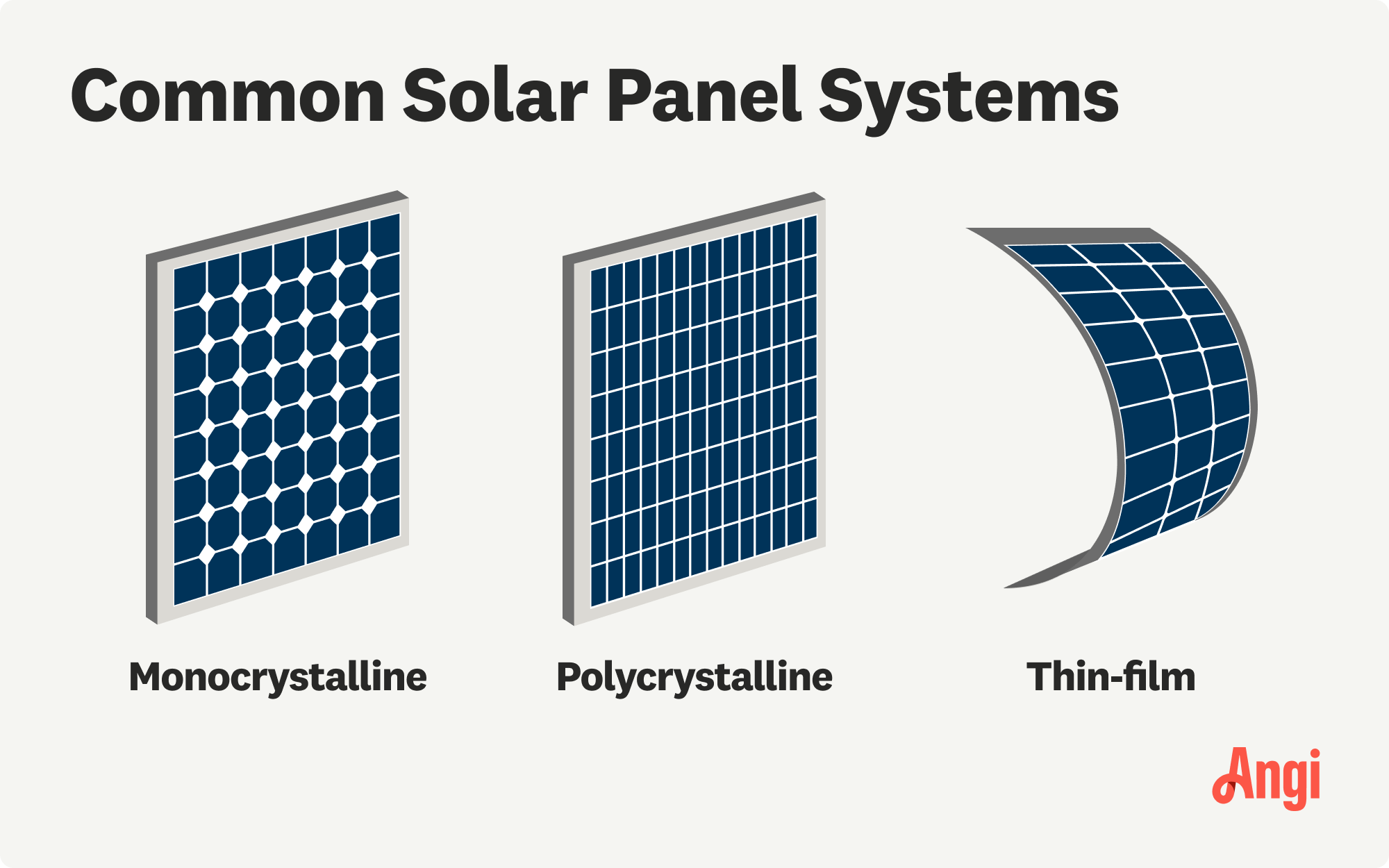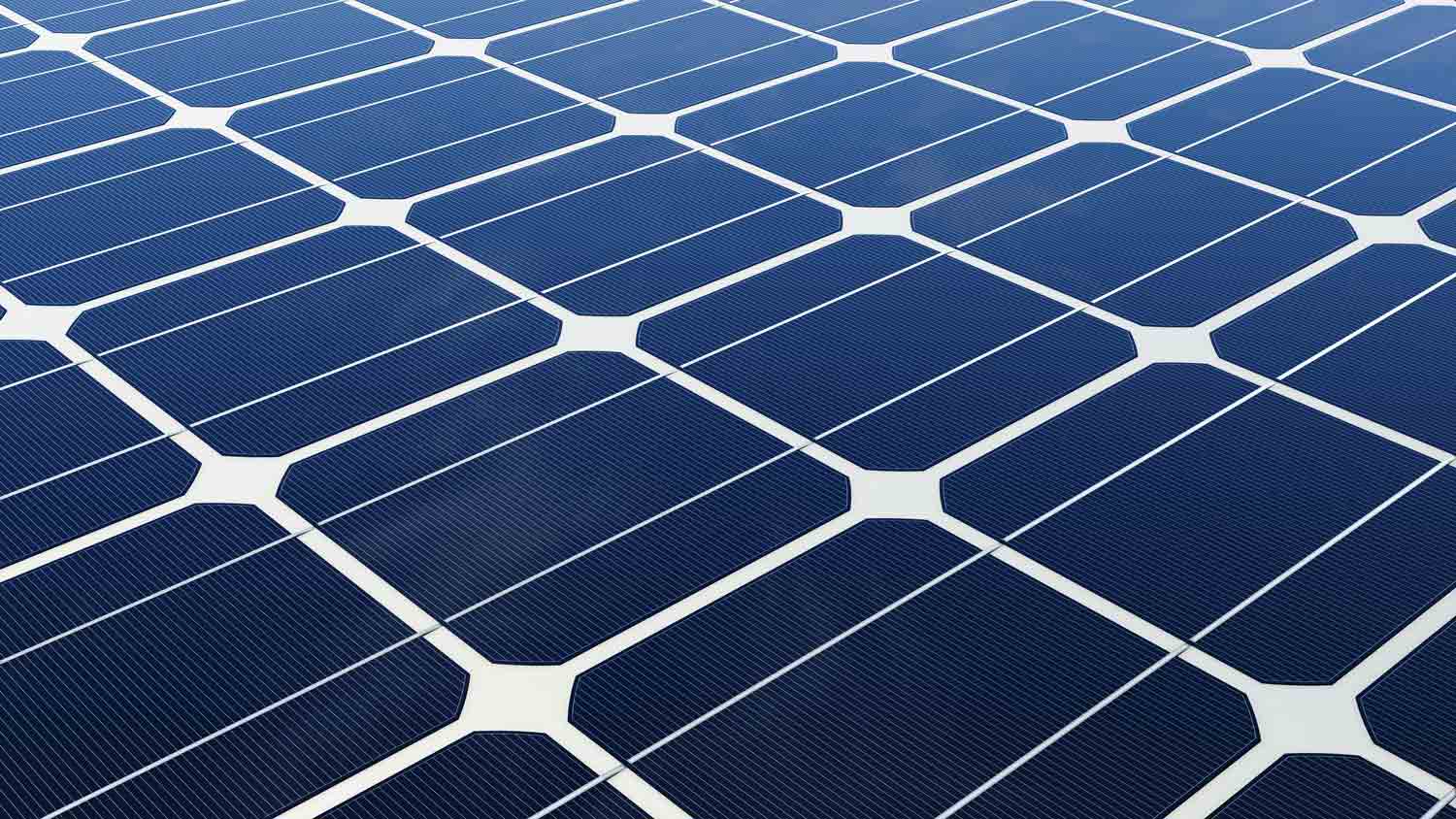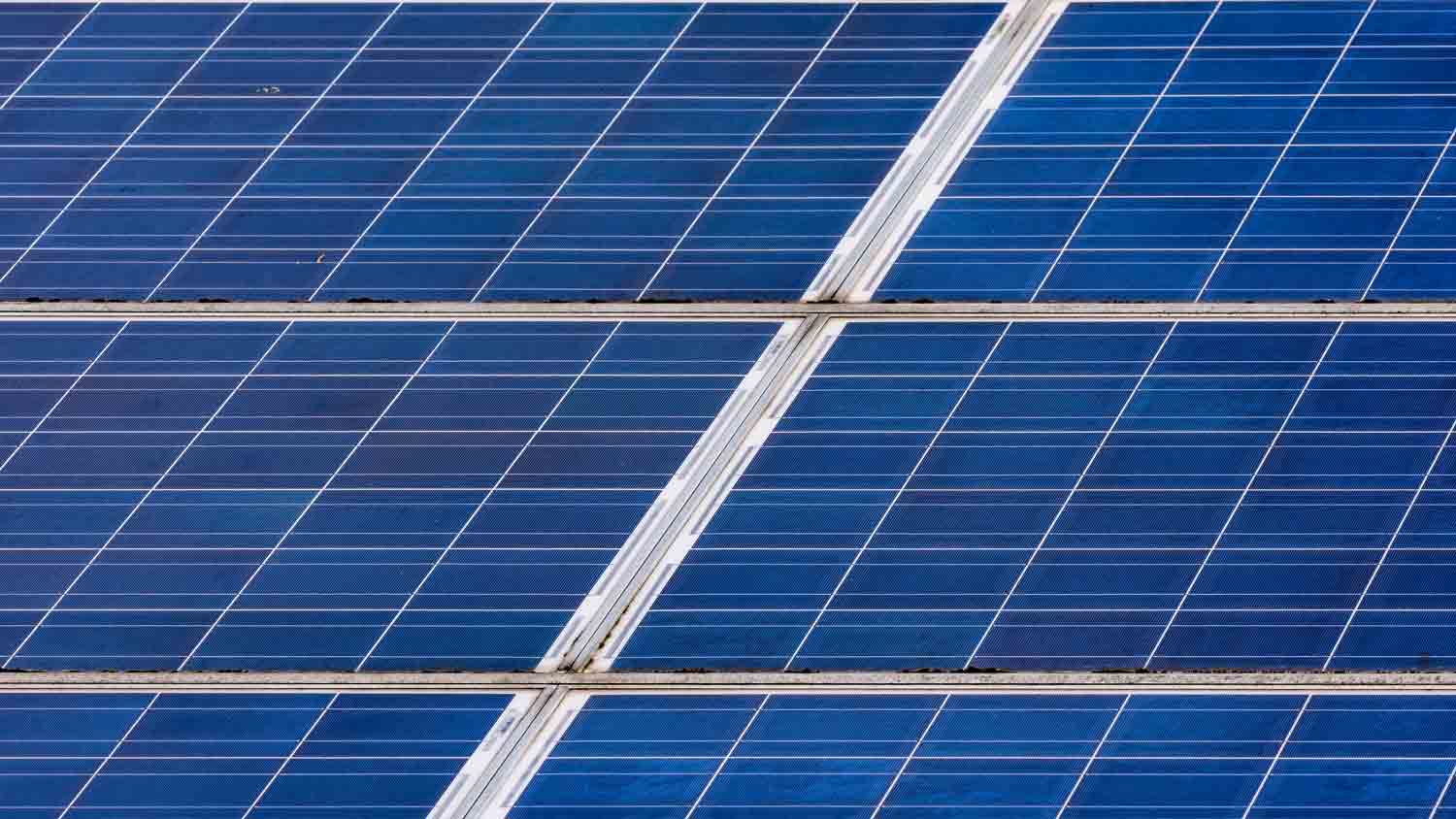
There are a few factors to consider when it comes to solar panel repair costs. This guide breaks down the prices of solar panel removal, repair, and replacement.
Get a crystal clear close-up on two types of solar panels


Monocrystalline solar cells are made from a single silicon ingot.
Polycrystalline solar cells are made from an amalgam of silicon fragments.
Monocrystalline panels are more energy-efficient but also more expensive.
Polycrystalline panels are more affordable but have a blue hue that doesn’t blend as well with roofing.
Thinking of adding solar panels to your home? You’ll want to understand the difference between monocrystalline versus polycrystalline solar panels. Both types are made with silicon, but they’re structurally different, and that affects their price, efficiency, and appearance. Knowing the differences can help you decide which type fits your budget and space.

Both monocrystalline and polycrystalline solar panels are made of silicon. Because monocrystalline solar cells are made from a single silicon crystal, they’re more energy-efficient but also more expensive to make. Polycrystalline solar cells are made from a melted-down amalgam of silicon crystals. The result is a more affordable but less efficient solar cell.

The monocrystalline solar cells used to make monocrystalline solar panels are sliced from single silicon crystals. Sometimes, all of the cells on a solar panel come from the same crystal. The crystals are lab-grown and then cut into thin discs or wafers before being treated to enhance solar efficiency. The edges are cut to create an octagonal shape, allowing the maximum number of cells per solar panel.
| Pros | Cons |
|---|---|
| High efficiency | More expensive |
| Black hue blends into roofs | Manufacturing process can be wasteful |
| Lower temperature coefficient | |
| Can last up to 40 years |
Best for:
Areas with limited space
Those who want panels to blend in with the roof
Areas with less sunlight
Homes that require more watts
Monocrystalline solar panels have better energy efficiency than polycrystalline panels. Because the cells are cut from a single silicon crystal, electrons can move more freely to create more energy. Their efficiency may mean you need fewer panels to get the wattage your home needs. They’re a good option for areas with limited space or less sunlight.
A monocrystalline solar panel’s black color blends better with most roofs, making them less conspicuous. You can’t hide solar panels, but this type doesn’t stand out as much.
Another benefit of monocrystalline panels is their lower temperature coefficient. The temperature coefficient indicates how the panels perform under temperature changes. A lower temperature coefficient means they maintain better efficiency when temperatures drop below the optimum 59 degrees Fahrenheit or rise above 95 degrees Fahrenheit.
Finally, there’s the lifespan of the panels. Monocrystalline panels easily last 25+ years, with some models lasting up to 40 years with proper care and maintenance.
On the downside, the manufacturing process for monocrystalline solar panels is more expensive and wasteful. They cost $1 to $1.50 per watt. The manufacturing process also leaves shards of crystal that can’t be reused.

Polycrystalline solar cells are made from silicon crystal fragments. The fragments are melted down and cut to form solar cells or wafers. The wafers have a bluish color. These solar cells are easier to manufacture and produce less waste.
| Pros | Cons |
|---|---|
| More affordable | Less efficient |
| Manufacturing produces less waste | Bluish hue |
| Higher temperature coefficient |
Best for:
Areas with lots of sunlight
Those with a tighter budget
Polycrystalline solar cells are made from melted silicon shards cut into wafers. The process is easier and more cost-effective than making monocrystalline cells. A polycrystalline solar panel costs approximately $.91 to $1 per watt. The manufacturing process also produces less waste because of the use of silicon shards to create more solar cells.
If you’re on a tight budget and live where there’s lots of sunlight, polycrystalline panels can save you money upfront.
Polycrystalline solar cells are made from an amalgam of silicon shards melted together. The amalgamated structure slows the movement of electrons, reducing the panel’s efficiency compared to monocrystalline panels. If you’re low on space, you might need too many polycrystalline panels to produce the power you want.
The bluish hue of these panels doesn’t blend with roofing as well, making them more noticeable. Finally, polycrystalline solar panels have a higher temperature coefficient. Consequently, their efficiency drops more with temperature changes.
In a side-by-side comparison, there’s a clear winner in each category. Remember that your geographic location may determine which panels are available to you. For example, monocrystalline panels are generally the only viable option in areas with frequent cloud cover.
Solar panels are an investment no matter which type you install. However, polycrystalline solar panels may put solar energy within reach if you’re on a tight budget. The manufacturing process for polycrystalline cells allows for the reuse of silicon crystals, lowering the overall cost and reducing waste. Prices vary by location, so get a few estimates from local solar panel installation companies. It’s possible for polycrystalline panels in one location to be as expensive as monocrystalline panels in another location.
Monocrystalline solar panels win for durability because they retain more efficiency during temperature changes than polycrystalline panels. That doesn’t mean they won’t lose some efficiency, but they’ll perform better than polycrystalline if temperatures fluctuate frequently.
The use of single silicon crystals allows electrons to move more freely, resulting in more power generation. If you compare the power generation of a monocrystalline panel with that of a polycrystalline panel of the same size, the monocrystalline panel will generate more power.
How long do solar panels last? The good news is that both mono- and polycrystalline solar panels have excellent life spans. Most systems come with at least a 25-year warranty. However, some monocrystalline panels can last up to 40 years. Their ability to withstand temperature change contributes to the potential for longer life. However, both panel types need regular maintenance and care to reach their full lifetime potential. Thankfully, when the panels reach the end of their life, many solar panel parts are recyclable.
While this might be debatable, most people agree that monocrystalline solar panels look better because they blend better with roofing materials. You can't fully hide solar panels of course, but at least monocrystalline panels are less noticeable.
From average costs to expert advice, get all the answers you need to get your job done.

There are a few factors to consider when it comes to solar panel repair costs. This guide breaks down the prices of solar panel removal, repair, and replacement.

Get a detailed estimate of solar farm costs. Learn about average prices, key cost factors, and ways to save when planning your solar farm project.

Solar battery costs depend on the size of your system, labor, and capacity. Learn how much you could pay for batteries for home solar systems.

Discover solar panel maintenance costs, including average prices, cost factors, and tips to save, empowering you to keep your solar system running efficiently.

While solar panels offer many benefits, they can be vulnerable to wild weather. Learn more about how hail can damage your solar panels.

You know what solar panels look like, but do you know what solar panels are made of? Here are the details behind this money-saving technology.